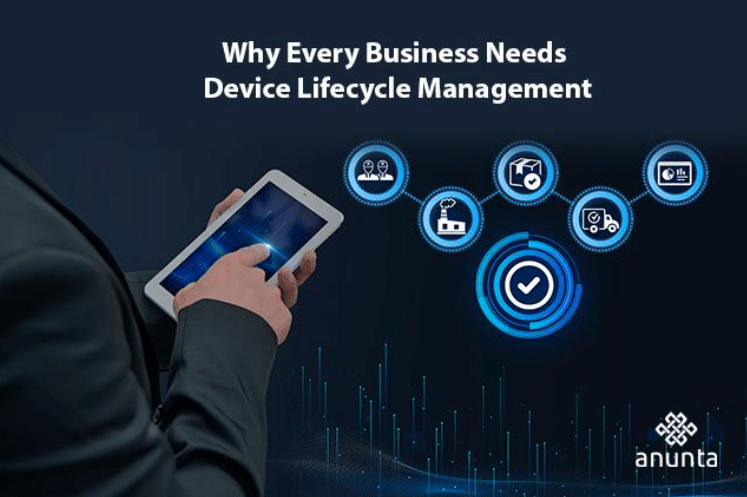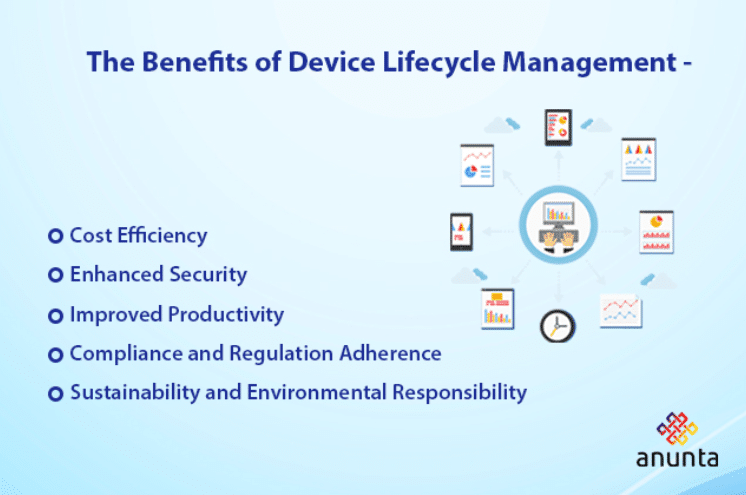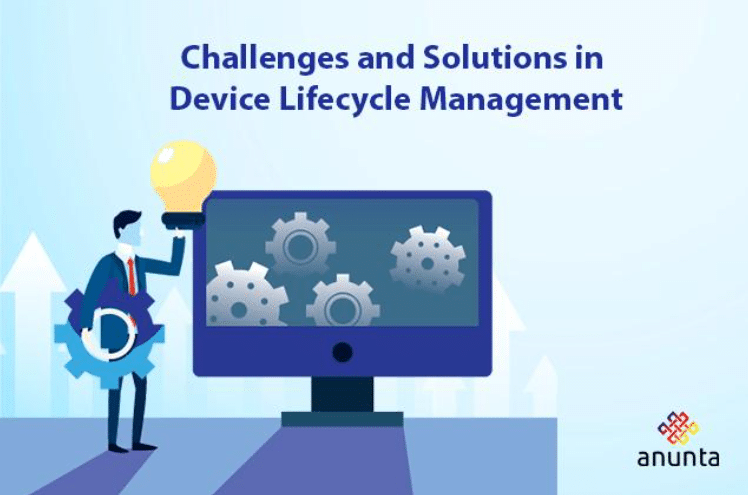
Businesses heavily rely on a variety of electronic devices to carry out their operations efficiently. From laptops and smartphones to servers and IoT devices, the range of technology tools at a company’s disposal is vast. However, managing these devices throughout their entire lifespan can be a daunting task.
How can businesses ensure their devices remain secure and functional? What strategies can optimize the performance and longevity of these devices? This is where Device Lifecycle Management (DLM) comes into play. DLM is a strategic approach to managing the lifecycle of electronic devices within an organization, from procurement to disposal.
Device Lifecycle Management encompasses all the stages a device goes through during its tenure in a business environment:
By systematically managing these stages, businesses can maximize the value derived from their technological investments and mitigate risks associated with device misuse or failure.

One of the most significant benefits of DLM is cost efficiency. Proper lifecycle management helps in:
Devices are often the gateways to sensitive company data. Effective DLM includes:
With DLM, businesses can ensure that employees have reliable and up-to-date equipment, which directly impacts productivity:
Many industries are subject to strict regulatory requirements regarding data security and device management. DLM helps in:
DLM promotes environmentally responsible practices through:
The first step in implementing DLM is to assess current device management practices and identify areas for improvement. This involves:
Procuring devices involves more than just purchasing the latest technology. It requires:
Efficient deployment is crucial for minimizing disruption. Best practices include:
Ongoing management ensures devices remain functional and secure. Key activities include:
Providing effective support ensures that employees can quickly resolve any device-related issues. This includes:
When devices reach the end of their useful life, proper retirement processes are essential. This involves:

Despite its benefits, implementing DLM can present several challenges:
To overcome these challenges, businesses can:
At Anunta Tech, we help businesses simplify and optimize Device Lifecycle Management with secure, automated, and scalable solutions. From procurement and deployment to management, support, and retirement, our expertise ensures devices remain reliable, compliant, and cost-efficient throughout their lifecycle. By partnering with us, organizations can reduce overhead, enhance security, boost productivity, and focus on their core operations while we manage the complexities of their IT infrastructure.
Q1: What exactly is Device Lifecycle Management, and why is it important for my business?
A1: Device Lifecycle Management (DLM) is a strategic approach to managing the lifecycle of electronic devices within an organization, from procurement to disposal. This includes selecting and purchasing devices, setting them up for use, maintaining and updating them, providing technical support, and securely disposing of them at the end of their life.
Q2: How does implementing Device Lifecycle Management help reduce costs for my business?
A2: DLM improves cost efficiency by enabling better budgeting and forecasting, providing clear insights into when devices need to be replaced. It helps reduce overhead costs through regular maintenance and timely upgrades, which prevent expensive emergency repairs and minimize downtime.
Q3: In what ways does Device Lifecycle Management enhance the security of my business’s devices and data?
A3: Device Lifecycle Management enhances security by ensuring that all devices receive regular updates and patches, reducing cyberattacks vulnerabilities. It includes secure disposal processes, such as proper data wiping, to prevent data breaches.
Q4: Can Device Lifecycle Management make a difference in employee productivity? How?
A4: Yes, DLM can significantly impact employee productivity by ensuring that employees have reliable and up-to-date equipment. This reduces downtime caused by device malfunctions or inefficiencies. Automated deployment and management tools save time and reduce manual errors, while regular upgrades and maintenance keep devices operating efficiently. All these factors contribute to a more productive and efficient work environment.
Q5: How does Device Lifecycle Management contribute to environmental sustainability?
A5: Device Lifecycle Management promotes environmental sustainability by encouraging proper recycling and e-waste management, reducing the environmental impact of disposed devices. By extending the lifespan of devices through regular maintenance and upgrades, DLM reduces the need for frequent replacements, thus minimizing electronic waste.
Research Review with Anunta’s CTO | Jan 14 | 12PM PST/3PM EST